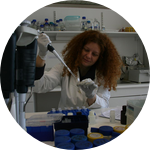Welcome to the second phase of our investigations into the dynamics of eDNA release rate by Proteus!
Welcome to the second phase of our investigations into the dynamics of eDNA release rate by Proteus!Since the results of the two analyses carried out in 2017 and 2018 were promising, but inconclusi...
Green Christmas
Dear backers,There has been a lot of excitement in our team over the past week, and now I would like to invite you to participate. No, this is not about https://garfield.com/comic/2010/12/25. The r...
A prestigious nomination
Dear eProteus backers, This will be my last update on the first phase of the project, which has been completed with the help of your donations. For this occasion I chose to post a piece of extraor...
Je ne sais pas si je peux, mais je vais essayer!*
* R. Goscinny & A. Uderzo (1965): Asterix chez les Bretons, pl. 43Dear Backers,Thanks to your interest and generous donations, it looks like I will be able to complete the first phase of brain ...
eDNA in Subterranean Biology Update
At the 23rd International Conference on Subterranean Biology two years ago I presented the results of a survey that introduced the eDNA method in the subterranean environment. Since then it is poss...
Brains, anyone?
I am writing this progress report in humble recognition of the donation by an anonymous backer.Last Tuesday we ablated the neural complex of 72 Ciona adults of various sizes, which have been left t...
The Mystery of the Missing Molecule
Dear eProteus fans,It is with great satisfaction that I announce the outcomes of our little proof-of-concept experiment. Given that over a year has elapsed since I wrote the last note, and that the...
Field work successful
Four days, seven people, five sampling sites. Water level 78-80 cm, flow rate 2.38-2.64 m3/s, temperature 8.6-9 degrees Celsius at Malni station and 96-102 cm, 12.0-15.1 degrees Celsius at Postojns...
Field work days 1 and 2
